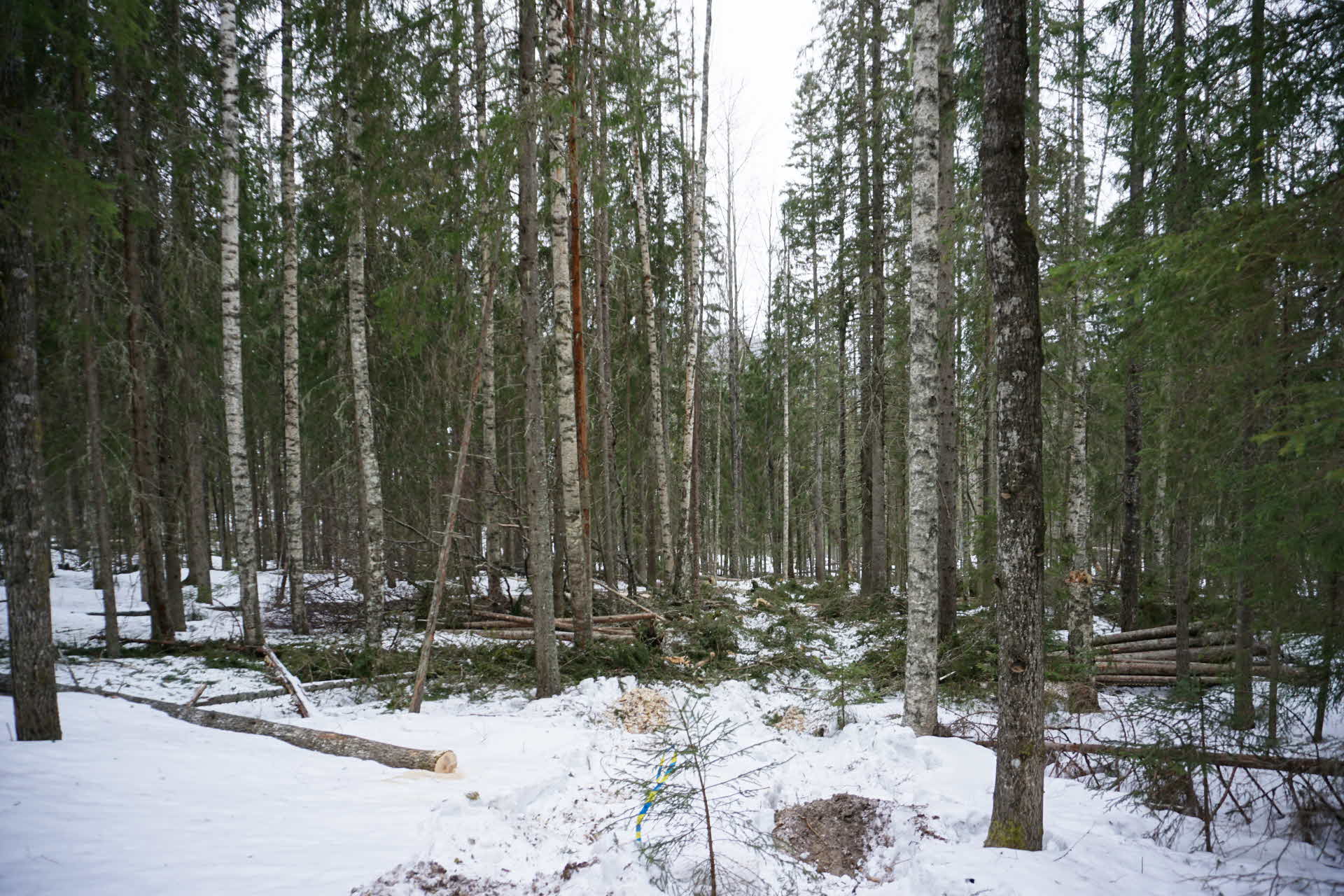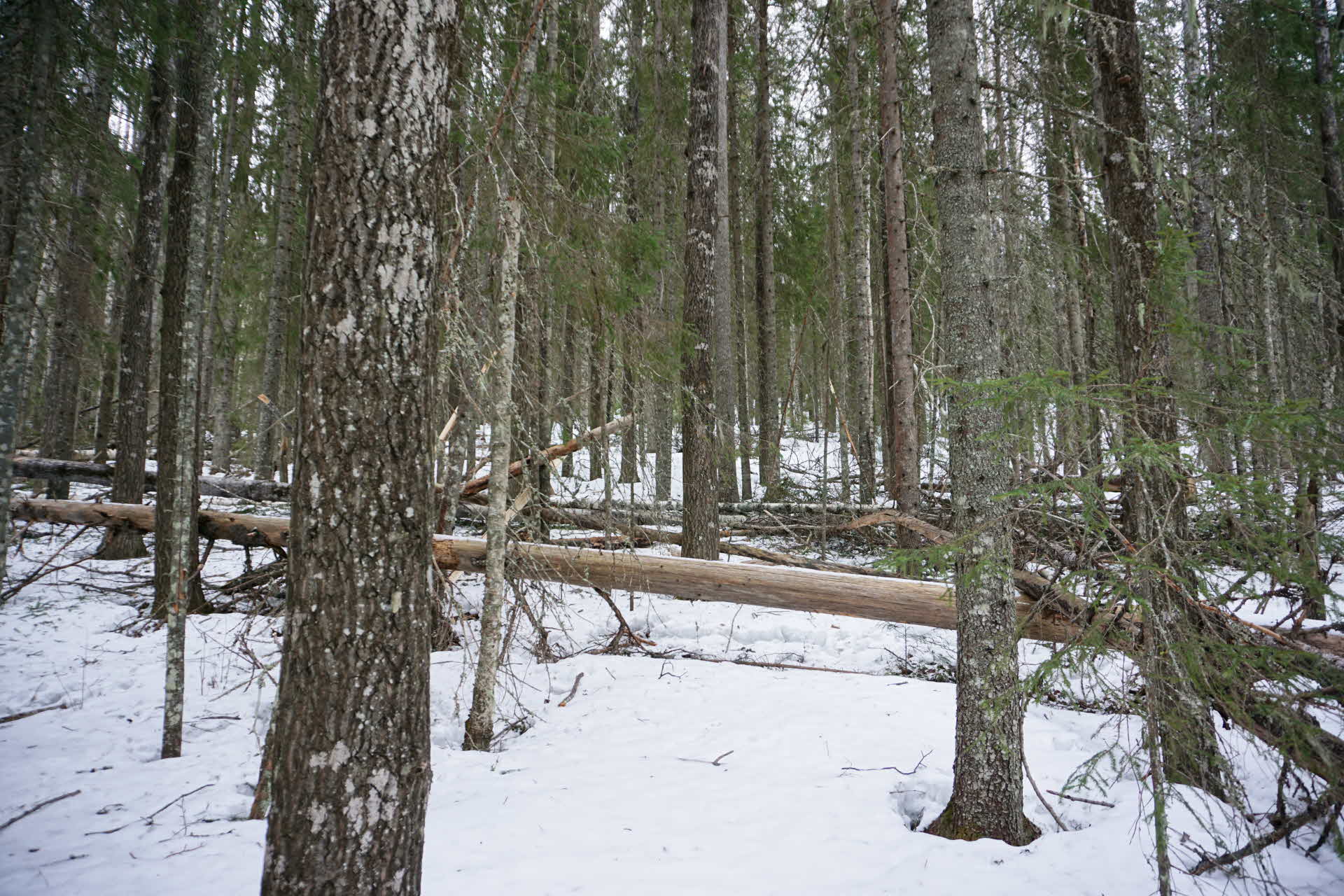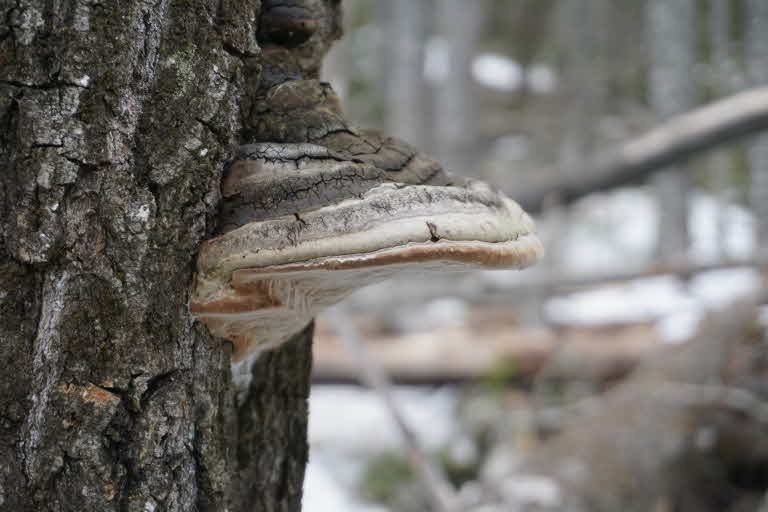
SCA’s harvesting promotes both sun-worshiping and shade-tolerant species
- News
- Forest
- Sustainability
SCA has tested a harvesting model in Sörgraninge conservation park that promotes both light-demanding and shade-tolerant species. “We’ve felled spruce and created a sparse network of strip roads that let the light in, but left the spruce forest growing between the roads untouched. This is really boosting biodiversity,” says Mikael Berg, nature conservation expert at SCA.
Middagsklippen is an area of roughly four hectares with a 90-year-old aspen-spruce mixed forest, with some birch and a few 150-200-year old spruce. The area has plenty of aspen and spruce windthrow, because the forest has self-thinned.
“This forest composition is probably the result of selective felling or a forest fire,” says Mikael.

Careful selection cutting
During winter 2023, SCA carried out a careful selection cutting by felling spruce alongside of well-planned strip roads. Between the roads, an area of spruce forest about 60-70 meters wide was left untouched.
“We’ve created a sparse network of strip roads where the felled gaps allow more light and warmth to reach the deciduous trees. Along the roads, we’ve carefully removed certain spruce in order to release some aspen. We’ve also created five-meter-high aspen stumps here and there, and left the remaining parts of their stems. The aspen will regenerate naturally in the felled gaps,” says Mikael.
“The forest is untouched between the roads and the ongoing self-thinning of spruce will increase the amount of deadwood,” he says.

Smorgasbord for biodiversity
SCA’s method of felling some spruce forest while leaving large parts untouched can promote both light-demanding and shade-tolerant species.

“This is an interesting area where we have valuable habitats that suit the special needs of various species – some require light and warmth to thrive, while others prefer shade and a slightly cooler environment. The dead wood also provides important habitats for a diversity of species. The area is almost like a smorgasbord for biodiversity,” says Mikael.
“We didn’t make a species inventory before these measures, but I’ve found a number of protected species such as lobaria pulmonaria, phellinus populicola, phellinidium ferrugineofuscum and phlebia centrifuga. There should be good conditions for other species to thrive here as well,” he says.
Photo: Mikael Berg